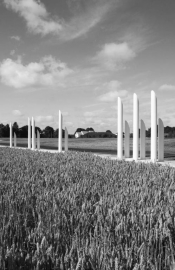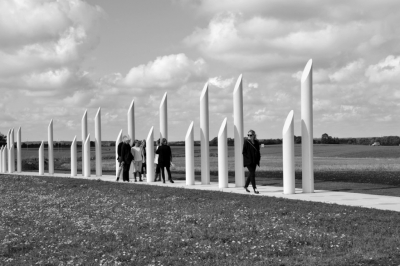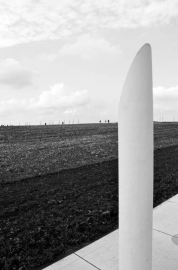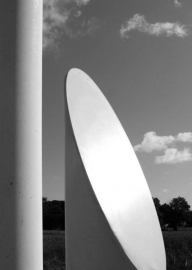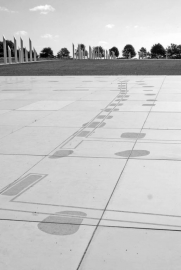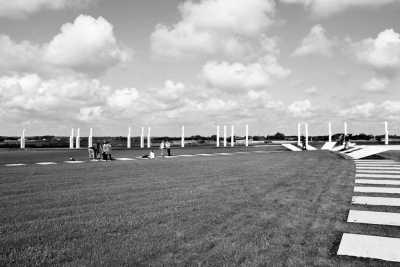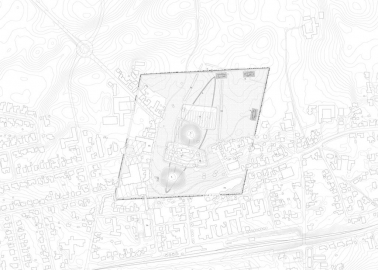The Monument Area
In the middle of Jelling, two mounds covered in grass, rises majestically towards the sky. Between the mounds stand two giant rune stones and a whitewashed medieval church. The monuments tell off a time, where Jelling was a significant imperial city and holds one of the most essential periods in the history of Denmark: Here Harald Bluetooth united the kingdom in one Christian nation. New great discoveries: A palisade fence, three longhouses and a stone ship from year 900, have given new life to the story about Jelling as the Viking ages supremacy and as the cradle of Denmark. Through a simple landscape modeling, this project for the Monument Site is based on an intention to identify and convey these new findings and the existing world heritage - including Thyrashøj, Gormshøj, The Church of Jelling and the Jelling Stones. The master plan interweaves the past and the present to a significant and memorable place. Closing for traffic along Gormsvej contributes to the reconnection of the Viking ages monuments and the modern city center. This relationship forms the basis for a characteristic and attractive urban environment where locals and tourists have the opportunity to explore history or simply relax in the peaceful surroundings. The Monument Site itself is laid out as an open green landscape that advantageously can be used as a scene for local running events, school excursions and annual Viking gatherings. With a close connection to the citys existing plaza, shopping streets and the new planned city park towards south, the objective is to strengthen local businesses and create a diverse city life.
The past in the present The Monument Site in Jelling can be regarded as a text or a palimpsest, which contain layers upon layers of importance. Through time buildings have been removed, reused or reconstructed; the ancient Jelling have continuously been rewritten and replaced with new parts. With the new findings, a hidden chapter has just seen the light of day. Today the task is to communicate and process this historical layer and thereby continue writing the ever-changing story of Jelling. The Palisade Archaeological excavations indicate that in the time of Harald Bluetooth, a palisade fence was constructed with a floor plan of 360x360 meters. The Palisade that encapsulates the mounds, the Jelling stones, and a number of longhouses and stone ships, was placed as a very accurate parallelogram. Geometric studies show that the different works of Harald Bluetooth, including Aggersborg, Fyrkat and Nordhøjen, can be written into a 60 meter module in this parallelogram. The palisade has in other words been constructed after the same basic principle and from the same measurements as Harald Bluetooths other works. The Monument Site in the city.
In order to create a close connection between the open landscape to the north east and the more urban areas towards west and south, the areas between the existing buildings in Jelling are being coated with the same light, almost white concrete. The concrete is laid out in relation to the building proportions, forming comprehensible areas. Hereby flexibility and functionality can be achieved, and spaces for daily life and parking are created. The general use of concrete, grass and heather vegetation connects the entire area and defines a landscape city center filled with history and memory. Here the visitor can feel the physical magnitude of the pasts fortification. Here the tourist can explore the story about Jelling as a power center and the birthplace of Denmark. Here the inhabitants have the possibility to relax or bike around in a characteristic and unique monument landscape.

